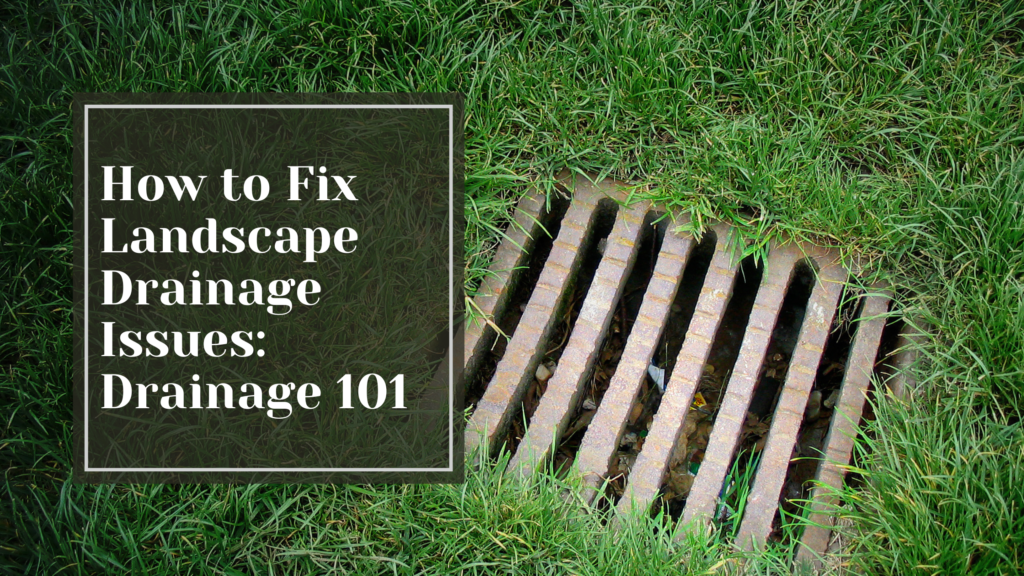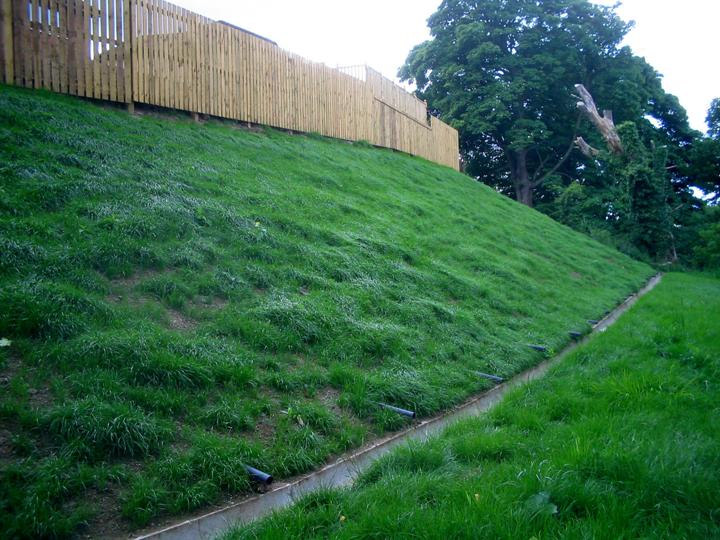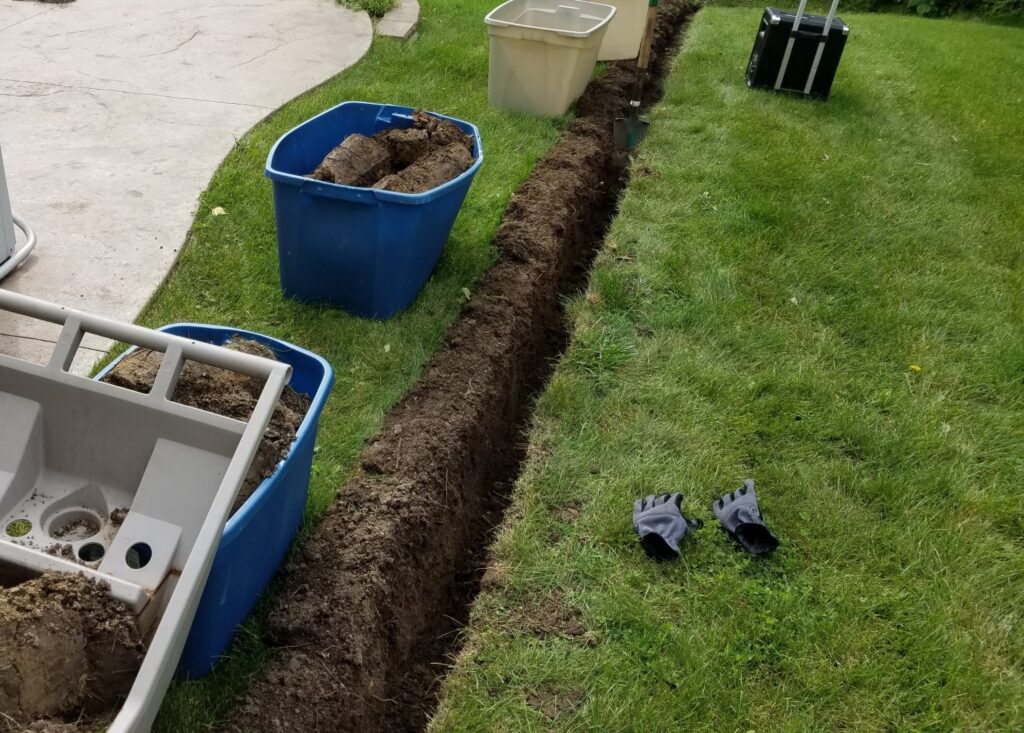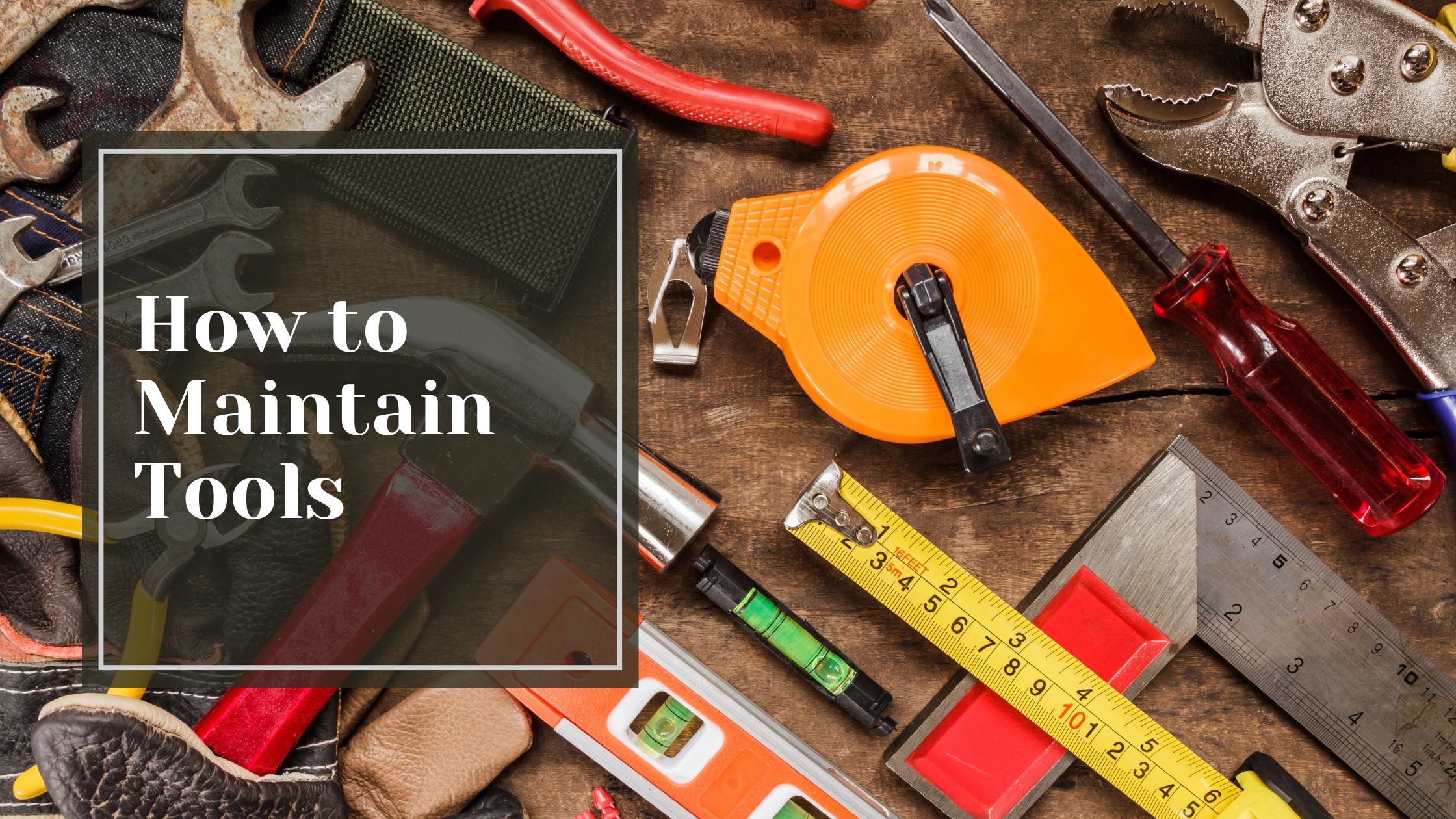It can happen to even the most pristine landscapes – major pools and puddles after heavy rain. Or even worse, major flooding during the rain! To help you resolve these issues and preserve the beauty of your landscape, we’ve created ‘Drainage 101’, a comprehensive guide on landscape drainage, covering the best methods used by landscape professionals today.
Table of Contents
ToggleKeep Your Garden Safe: Effective Drainage Solutions for Excess Water
Excess water can be incredibly damaging and restrict access to your property. Over-saturated soil is also a safety hazard, possibly causing you to slip on wet or muddy ground. Not to mention it’s hard to show off your garden when it’s flooded. Protect your garden or yard from excess water with effective drainage solutions.
Drainage is often overlooked when it comes to basic landscaping. Figuring out how to divert rainwater isn’t usually as exciting as picking out which tree to plant, but it’s one of the most crucial components of a successful landscape. Here’s the drainage basics to help you keep your yard functional and beautiful all year long!
Understanding Drainage: Water Movement
What causes water to drain? Gravity – what makes it all possible. Every drainage mechanism takes advantage of this principle to move water away from where you don’t want it. Slopes (or inclines) and grades (or gradients) are used to divert flows of water directionally to where it will not be problematic. This is typically downhill, far away, or into the earth using ground penetration.
The 1/4 Inch per Foot Rule
A slope, in simple terms, is like the side of a mountain. It has a natural tilt which causes water to move from high to low due to gravity. It’s called the “rise over the run” and is calculated by measuring the height of one side compared to the other, divided by the distance between them. For example, if you have a slide that is 10 feet high and 5 feet long (across the ground), then your slope would be 10ft / 5ft – or a 2’ foot drop for every 1’ foot across. This is how slopes are referred to in landscaping.
For water to drain effectively down a grade, it needs to reflect at least a 1” inch drop for every 4’ feet (or ¼” per foot) in the direction you want it to flow. This essential plumbing principle ensures everything drains down your home’s pipes. It applies in your yard too. When in doubt, it’s always a good idea to slope more than less. Any less than ¼” per foot and water will not flow, but anymore and it simply drains faster.
Change the Slope of Your Yard for Natural Water Flow
What’s your landscaper talking about when he says “grading”? He’s referring to changing the slope and evenness of your yard. By creating higher ground with a smoother surface, you can disperse runoff more effectively and increase your baseline drainage. This is effective but can also be costly – sometimes requiring a lot of excavation, tilling, and dirt hauling. This is a good option if you don’t want to sacrifice any soil to landscape recycling. Excess dirt can often be relocated elsewhere on the property.
Trenches: A Quick and Effective Answer
Trenches act as a canal, directing water where you want it to go. Connect trenches to create channel systems for excess water to concentrate in as it flows, versus flowing across the whole surface. Trenches are best placed downhill from where water normally accumulates and flows so that they can catch the water naturally. They’re often placed alongside or in front of structures you want to protect. Trenches are a cheap way to keep water away from your home’s foundation.
They should typically be a minimum of 8” – 12” inches for proper function but can vary depending on factors like expected water volume, soil density, ground saturation, spatial obstacles, etc. It doesn’t hurt to call a professional to get a second opinion and probably a quote if you’re unsure how deep your trench should be. They should be able to identify possible problems that may arise before you start digging.
French Drains: An Easy and Affordable Solution
Trenches can be a very simple solution to minor drainage issues. French Drains are often a cost-effective and easy answer – essentially just a trench with medium-sized rocks which let water pass through them much quicker than dirt.
Drain Basins: Manage High Water Volumes
Drain basins are a great way to relieve high volumes of water – a key element of efficient drainage systems. They can be wet or dry: dry meaning they drain the water down into the ground, and wet meaning they hold water most of the year. Dry river beds and dry wells allow water to penetrate topsoil easily to reach deep underground. Retention ponds are a great ‘wet’ solution that often have water-friendly plants to absorb, filter, and store runoff water. Plastic drain basins are usually connected to trenches and pipes. They provide a space where water can collect and penetrate deeper, or outflow to a larger drain system.
Sump Pumps: Landscaper’s Last Drainage Resort
In rare cases where the slopes and soils just don’t agree and a simple solution isn’t possible, drain basins with a sump pump can sometimes be your saving grace. They’re often used in basements and crawl spaces that flood easily, but they can also be a good answer for when you can’t drain down and can’t gravity-feed the water away. The excess water collects in the basin, and any water that won’t drain will be pumped through a pipe or hose off the property.
Effective Drainage Solutions: The Power of Piping
Pipes divert water much more effectively, allowing your drain system to handle much greater volumes of water quickly. They’re typically some type of plastic like ABS if going underground and can be corrugated (ribbed) or perforated (holed), depending on the situation. Above-ground piping is usually in the form of metal downspouts from your gutters and is often connected to plastic piping to further the distance from the house. PVC is often used for rainwater collection, which helps drainage but is not a drainage solution.
Pipes are placed in trenches to reduce resistance and increase flow. They can outflow downhill, drain into a retention area like a pond, or drain down into the earth using a drain basin. Sometimes, there’s a local stormwater drain line you can tie into, which is usually good to take advantage of.
Sizing Pipes for Drainage
Sizing your pipes can be tricky if you’re already in a high-rainfall area or have uniquely difficult drainage issues. Like trenches, it’s generally better to go larger than smaller. This ensures they work and prevents your system from backing up. In most places with average rainfall, a 3” – 4” pipe is more than enough to work sufficiently. Adding more trenches and piping can often be cheaper than using larger pipes – which can quickly become very costly.
Final Thoughts on Landscaper’s Guide to Fix Drainage Issues
This guide includes all the basics you’ll need to fix most residential drainage issues. It never hurts to speak with some landscape professionals about different methods and designs if you have an exceptionally hard time keeping a dry yard. Every landscape has many possibilities for how the drain system could work – sometimes, you just need a creative solution!







